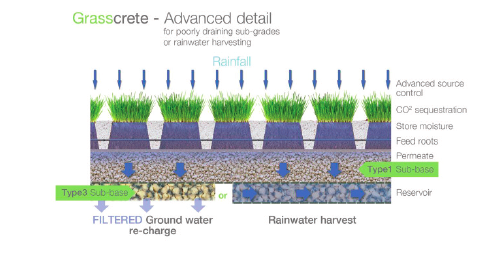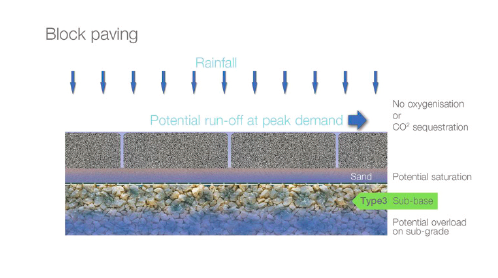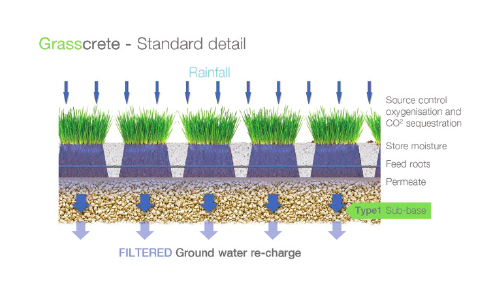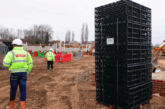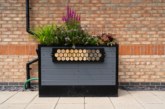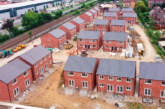
Grass Concrete explains the key to sustainable practices when specifying grass paving systems.
Today’s wide choice of grass paving systems means that specifiers now have a massive choice of products and specification. As a supplier of grass paving systems for more than fifty years, Grass Concrete sees a strict fit for purpose policy as the key to achieving sustainability in any construction project.
Take for example a daily used access road or housing development car park in daily use; “will the grass cover and then the structure stand up to that sort of regime?” If the application is to slopes, “will it function as an armouring layer and will it offer grip?” These are the sort of challenging questions that that should be asked to ensure a correct specification.
The Grass Concrete policy is to guide clients to the most appropriate system – in-situ-concrete, pre-cast concrete or plastic systems. This strict fit for purpose policy is the key to achieving sustainability in any construction project, with careful consideration of grass paving types, particularly when likely to be subjected to frequent traffic and weights of vehicles.
With a long-established track record of grass paving installations, Grass Concrete is uniquely placed to work closely with housebuilders and architects alike to recommend appropriate systems.
Experienced insight
At Grass Concrete, our 50 years plus of grass paving experience and installations has given us considerable insight into sustainable permeable paving and, more recently, with the attention around Sustainable Urban Drainage Systems (SuDS). Recent high rainfall and flash flooding puts extreme pressure on the drainage and sewer network which is often unable to cope with this peak demand. SuDs schemes are designed to mitigate these scenarios. Grass Concrete’s view is that Smart Permeability is what is required.
Incorporating SUDS using Grass Concrete’s permeable paving helps mitigate the implications of surface water run-off and its implications for the functioning of the local storm water network.
It’s not simply about getting water from A to B, it is about what you do with it along the way. Smart Permeability, using source control to manage the rate of permeability, both mitigates downstream impact and provides essential root nourishment for grass coverage.
Compare the systems
Sustainable grass cover is best achieved by a system that promotes permeability. The depth and shape of the soil pockets can have a critical part to play. Both Grasscrete and Grassblock offer substantial capacity for soils and root systems to promote maximum grass coverage.
A grass reinforced system can permeate at up to 90% the rate of natural grass and a safe lag time can be achieved. Storing water within the system with low risk of ponding until the ground can naturally re-charge is a significant benefit. Lag time is beneficial in the prevention of flooding and can be extended by introducing an underlying drainage blanket across the full extent of the paved area. The drainage blanket can be used to either attenuate permeation to the water table or be a vehicle for rainwater harvesting.
Fit for purpose policy
Grass Concrete offers both cast-on site Grasscrete and precast Grassblock systems and follows a strict fit-for-purpose policy as the key to achieving sustainability in any construction project.
To find out more, talk to the experts in permeable grass at www.rdr.link/dbe036

